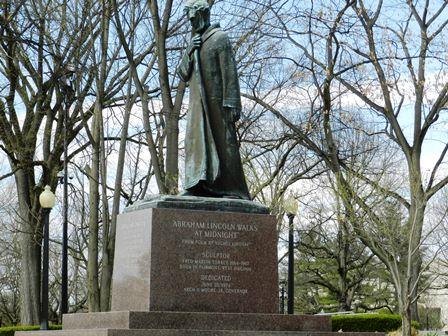» posted on Tuesday, March 26th, 2013 by Linda Lou Burton
The Citizen Key
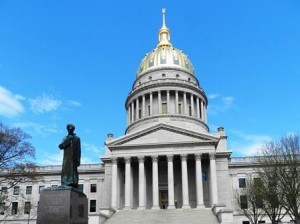 Linda Burton posting from Charleston, West Virginia – On the front steps of the West Virginia state capitol is a statue of Abraham Lincoln. It’s a nine-foot bronze, designed by Fred Martin Torrey and installed in 1974. The inscription reads: Abraham Lincoln created the state of West Virginia by proclamation and signature. West Virginia joined the Union June 20, 1863. A woman wearing a bright orange jacket and bright orange shoes walked up just as I was snapping pictures; she had her camera out too. I offered to take her picture beside the Lincoln statue; she declined. “It’s impressive as it is,” she said, shaking her head. “I’ll remember I was here.” Faye and I exchanged names; she said she was from Bristol, right on the Virginia-Tennessee line. “I’m wearing my Tennessee orange, did you catch that?” she laughed, pointing to her shoes.
Linda Burton posting from Charleston, West Virginia – On the front steps of the West Virginia state capitol is a statue of Abraham Lincoln. It’s a nine-foot bronze, designed by Fred Martin Torrey and installed in 1974. The inscription reads: Abraham Lincoln created the state of West Virginia by proclamation and signature. West Virginia joined the Union June 20, 1863. A woman wearing a bright orange jacket and bright orange shoes walked up just as I was snapping pictures; she had her camera out too. I offered to take her picture beside the Lincoln statue; she declined. “It’s impressive as it is,” she said, shaking her head. “I’ll remember I was here.” Faye and I exchanged names; she said she was from Bristol, right on the Virginia-Tennessee line. “I’m wearing my Tennessee orange, did you catch that?” she laughed, pointing to her shoes.  We chatted about the building in front of us, and the statue. “He looks so sad,” she said. “Do you think he’s upset about making West Virginia a state, or just the war?” I had to admit I didn’t know; in fact, I was unclear on the sequence of events that led to West Virginia’s statehood, although I knew the split from Virginia happened during the Civil War. We walked around the statue, studying it more carefully. On the side of the pedestal were the words Abraham Walks At Midnight from a poem by Vachel Lindsay. Faye and I agreed we needed to beef up our knowledge of West Virginia history. Which I did. And the answer to Faye’s question was “No.” His pose is related to the Lindsay poem written in 1914. Statehood, well that’s another story.
We chatted about the building in front of us, and the statue. “He looks so sad,” she said. “Do you think he’s upset about making West Virginia a state, or just the war?” I had to admit I didn’t know; in fact, I was unclear on the sequence of events that led to West Virginia’s statehood, although I knew the split from Virginia happened during the Civil War. We walked around the statue, studying it more carefully. On the side of the pedestal were the words Abraham Walks At Midnight from a poem by Vachel Lindsay. Faye and I agreed we needed to beef up our knowledge of West Virginia history. Which I did. And the answer to Faye’s question was “No.” His pose is related to the Lindsay poem written in 1914. Statehood, well that’s another story.
 When American poet Vachel Lindsay (1879-1931) wrote the poem in 1914, he was distressed by World War I; his poem was intended to arouse “the Lincoln in us all.” Vachel was born in Springfield, Illinois and grew up across the street from the governor’s home, so his childhood was influenced by the “Lincoln atmosphere” of the town; he wrote other poems about Lincoln too. As to Fred Martin Torrey
When American poet Vachel Lindsay (1879-1931) wrote the poem in 1914, he was distressed by World War I; his poem was intended to arouse “the Lincoln in us all.” Vachel was born in Springfield, Illinois and grew up across the street from the governor’s home, so his childhood was influenced by the “Lincoln atmosphere” of the town; he wrote other poems about Lincoln too. As to Fred Martin Torrey 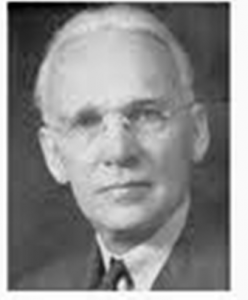 (1884-1967), he was a West Virginia native who studied at the Art Institute of Chicago; he sculpted a number of historic figures including George Washington, George Washington Carver, and Stephen Douglas. The “Midnight” design depicting a robed Lincoln walking the streets of Springfield, as described in the Lindsay poem, was exhibited as a small plaster model at the 1939 New York World’s Fair; Torrey died before completing the statue. The elegant nine-foot bronze now greeting all who come to the capitol steps was executed by
(1884-1967), he was a West Virginia native who studied at the Art Institute of Chicago; he sculpted a number of historic figures including George Washington, George Washington Carver, and Stephen Douglas. The “Midnight” design depicting a robed Lincoln walking the streets of Springfield, as described in the Lindsay poem, was exhibited as a small plaster model at the 1939 New York World’s Fair; Torrey died before completing the statue. The elegant nine-foot bronze now greeting all who come to the capitol steps was executed by 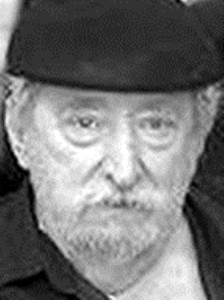 Charleston artist Bernard Wiepper (1926-2009) and installed in 1974; the plaster model is displayed in the WV State Museum. The story goes that the legislature did not want to pay for the project; after many fundraising efforts the Journalism Class at Fairmont Senior High (Torrey’s birth city) got the ball rolling with a dance and a bake sale. That’s as far as I can trace the story of the statue and those whose story is linked; so on to the issue of West Virginia statehood, and Lincoln’s part in it.
Charleston artist Bernard Wiepper (1926-2009) and installed in 1974; the plaster model is displayed in the WV State Museum. The story goes that the legislature did not want to pay for the project; after many fundraising efforts the Journalism Class at Fairmont Senior High (Torrey’s birth city) got the ball rolling with a dance and a bake sale. That’s as far as I can trace the story of the statue and those whose story is linked; so on to the issue of West Virginia statehood, and Lincoln’s part in it.
West Virginia is a “child” of the Civil War, one of only two states that came into being during that time (the other is Nevada). The complexities of this event are confusing; the West Virginia Department of Archives and History displays an article by Sheldon Winton entitled Statehood for West Virginia: An Illegal Act? http://www.wvculture.org/history/journal_wvh/wvh30-1.html . It is well-documented that tension between western and eastern Virginia goes back to at least 1776; the Virginia Constitution allowed only white males owning substantial land the right to vote, and allowed only two delegates per county. In the rugged western portion of the state farms were small and counties were large; those residing on the western side did not have equal representation. The Virginia Constitution was amended in 1830, addressing some issues; however it was rejected by western counties and a call for secession began, led by newspapers such as the Kanawha Republican.
 In 1831, the issue of African Americans came to the forefront following Nat Turner’s raid, which killed sixty-one whites in Southampton County, Virginia. William Lloyd Garrison first printed his newspaper, The Liberator that year; it marked the beginning of an organized national movement to end slavery, called abolitionism. Some abolitionists disapproved of slavery on a moral basis. Others supported abolitionism because they felt slaves were performing jobs that white laborers could be paid to do. Washington College President Henry Ruffner, son of Kanawha Valley salt industry pioneer David Ruffner and a slaveholder himself, wanted to end slavery in trans-Allegheny Virginia in order to provide more paying jobs for white workers. His theory, given as a speech in 1847 and later printed and distributed nationally, stated that slavery kept white laborers from moving into the Kanawha Valley.
In 1831, the issue of African Americans came to the forefront following Nat Turner’s raid, which killed sixty-one whites in Southampton County, Virginia. William Lloyd Garrison first printed his newspaper, The Liberator that year; it marked the beginning of an organized national movement to end slavery, called abolitionism. Some abolitionists disapproved of slavery on a moral basis. Others supported abolitionism because they felt slaves were performing jobs that white laborers could be paid to do. Washington College President Henry Ruffner, son of Kanawha Valley salt industry pioneer David Ruffner and a slaveholder himself, wanted to end slavery in trans-Allegheny Virginia in order to provide more paying jobs for white workers. His theory, given as a speech in 1847 and later printed and distributed nationally, stated that slavery kept white laborers from moving into the Kanawha Valley.
The catalyst that led to the final break between western and eastern Virginia occurred in 1860 with the election of Abraham Lincoln. On April 17, 1861, days after Lincoln’s order to seize Fort Sumter in South Carolina, a convention of Virginians voted to submit a secession bill to the people. Many western delegates marched out of the Secession Convention, vowing to form a state government loyal to the Union; they met in Wheeling in May. However, on May 23, a majority of Virginia voters approved the Ordinance of Secession. Was there vote tampering? That is argued to this day.
Following a Union victory at the Battle of Philippi and the subsequent occupation of northwestern Virginia by General George McClellan, the Second Wheeling Convention met  between June 11 and June 25, 1861, when delegates formed the Restored Government of Virginia. On October 24, 1861, residents of thirty-nine counties in western Virginia approved the formation of a new Unionist state. The accuracy of these election results also has been questioned.
between June 11 and June 25, 1861, when delegates formed the Restored Government of Virginia. On October 24, 1861, residents of thirty-nine counties in western Virginia approved the formation of a new Unionist state. The accuracy of these election results also has been questioned.
Fifty counties were selected to become part of the new state (all of present-day West Virginia’s counties except Mineral, Grant, Lincoln, Summers, and Mingo, which were formed after statehood). Most of the eastern and southern counties did not support statehood, but were included for political, economic, and military purposes. The mountain range west of the Blue Ridge became the eastern border of West Virginia to provide a defense against Confederate invasion. One of the most controversial decisions involved the Eastern Panhandle counties, which supported the Confederacy. The Baltimore and Ohio Railroad, which ran through the Eastern Panhandle, was important for the economy and troop movements; inclusion of these counties removed the railroads from the Confederacy.
 In terms of the new state constitution, the subject of slavery produced the most controversy; the final version banned the introduction of slaves or free African Americans into the state of West Virginia, but did not address the issue of immediate or gradual emancipation. Now to the tricky legal part. The United States Constitution says a new state must gain approval from the original state, which never occurred in the case of West Virginia. However, since the Restored Government was considered the legal government of Virginia, it granted permission to itself on May 13, 1862, to form the state of West Virginia. When Congress addressed the West Virginia statehood bill, intense controversy ensued regarding the issue of slavery; Massachusetts Senator Charles Sumner demanded an emancipation clause to prevent the creation of another slave state. On December 10, 1862, the House of Representatives passed the act; on December 31, President Lincoln signed the bill into law, approving the creation of West Virginia as a state loyal to the Union, with an amendment
In terms of the new state constitution, the subject of slavery produced the most controversy; the final version banned the introduction of slaves or free African Americans into the state of West Virginia, but did not address the issue of immediate or gradual emancipation. Now to the tricky legal part. The United States Constitution says a new state must gain approval from the original state, which never occurred in the case of West Virginia. However, since the Restored Government was considered the legal government of Virginia, it granted permission to itself on May 13, 1862, to form the state of West Virginia. When Congress addressed the West Virginia statehood bill, intense controversy ensued regarding the issue of slavery; Massachusetts Senator Charles Sumner demanded an emancipation clause to prevent the creation of another slave state. On December 10, 1862, the House of Representatives passed the act; on December 31, President Lincoln signed the bill into law, approving the creation of West Virginia as a state loyal to the Union, with an amendment 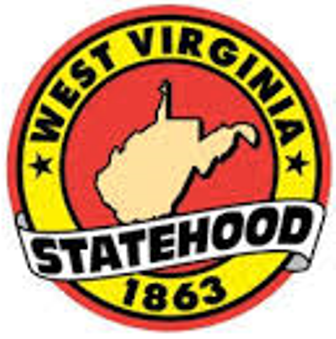 calling for gradual emancipation of slaves. The next step was to put the statehood issue to a vote by West Virginia citizens; on March 26, 1863, the majority approved and elections were held for governor and other offices; on June 30, the state of West Virginia came into being.
calling for gradual emancipation of slaves. The next step was to put the statehood issue to a vote by West Virginia citizens; on March 26, 1863, the majority approved and elections were held for governor and other offices; on June 30, the state of West Virginia came into being.
So, to Faye of the orange shoes from Bristol, and to all who walk by with camera in hand – that weathering statue of Lincoln in a somber pose on the capitol steps isn’t about his worries over the Civil War, or West Virginia statehood; it came from the imagination of a sculptor inspired by a 20th century poet. Nor did Lincoln sit at his desk on June 30, 1863 and simply create a state. History has far more layers than that, and citizen involvement is the key.
About West Virginia Statehood http://www.wvculture.org/history/statehoo.html
Abraham Lincoln Walks at Midnight by Vachel Lindsay, 1914
- It is portentous, and a thing of state
- That here at midnight, in our little town
- A mourning figure walks, and will not rest,
- Near the old court-house pacing up and down.
- Or by his homestead, or in shadowed yards
- He lingers where his children used to play,
- Or through the market, on the well-worn stones
- He stalks until the dawn-stars burn away.
- A bronzed, lank man! His suit of ancient black,
- A famous high top-hat and plain worn shawl
- Make him the quaint great figure that men love,
- The prairie-lawyer, master of us all.
- He cannot sleep upon his hillside now.
- He is among us:—as in times before!
- And we who toss and lie awake for long
- Breathe deep, and start, to see him pass the door.
- His head is bowed. He thinks on men and kings.
- Yea, when the sick world cries, how can he sleep?
- Too many peasants fight, they know not why,
- Too many homesteads in black terror weep.
- The sins of all the war-lords burn his heart.
- He sees the dreadnaughts scouring every main.
- He carries on his shawl-wrapped shoulders now
- The bitterness, the folly and the pain.
- He cannot rest until a spirit-dawn
- Shall come;—the shining hope of Europe free;
- The league of sober folk, the Workers’ Earth,
- Bringing long peace to Cornland, Alp and Sea.
- It breaks his heart that kings must murder still,
- That all his hours of travail here for men
- Seem yet in vain. And who will bring white peace
- That he may sleep upon his hill again?

